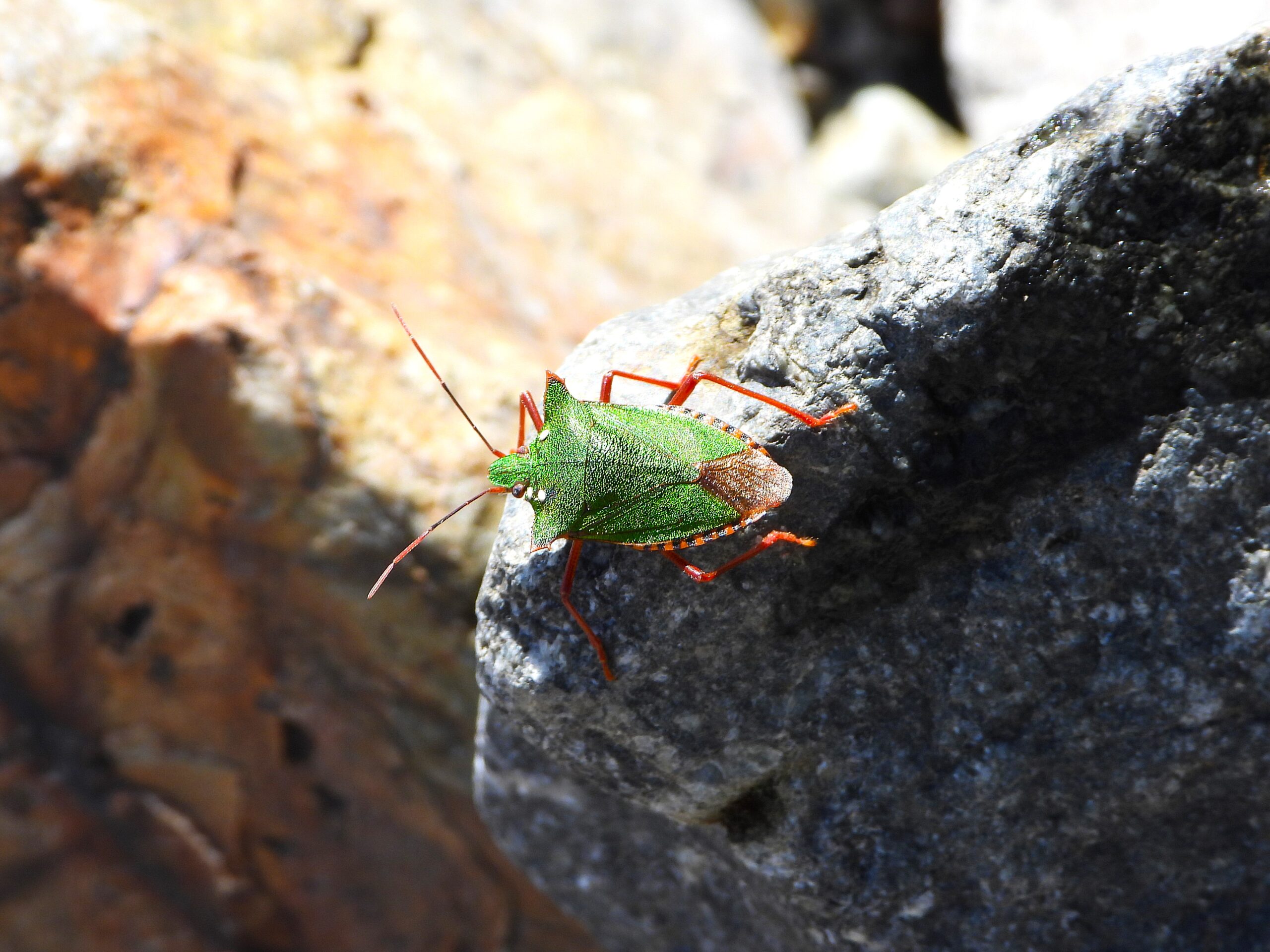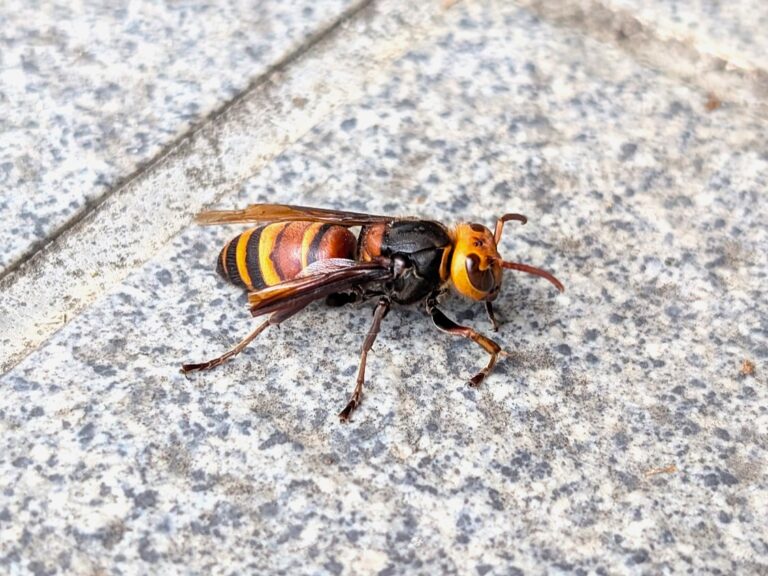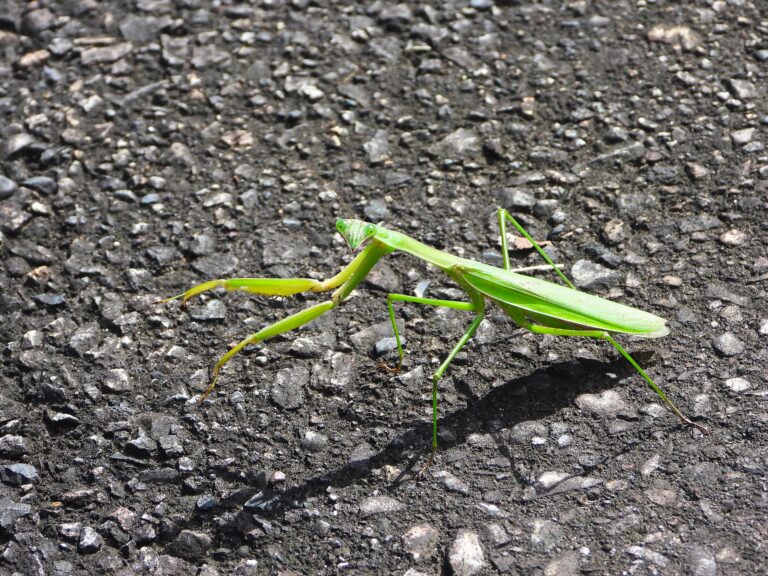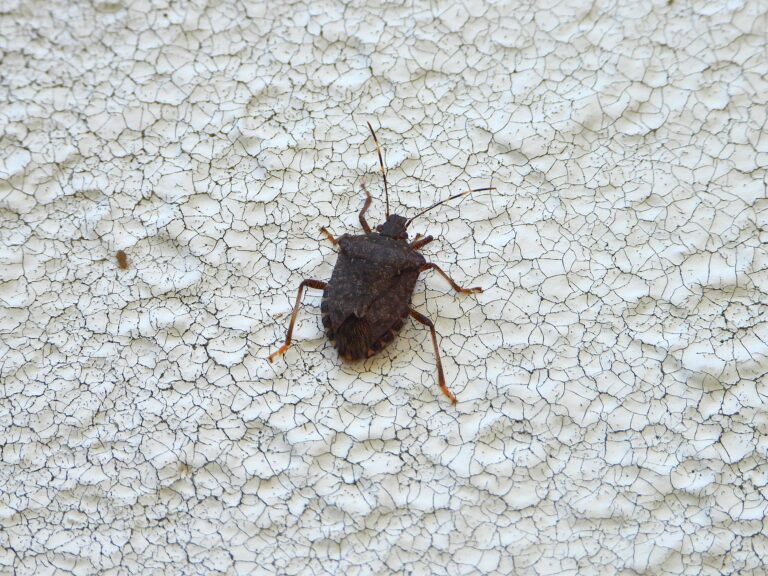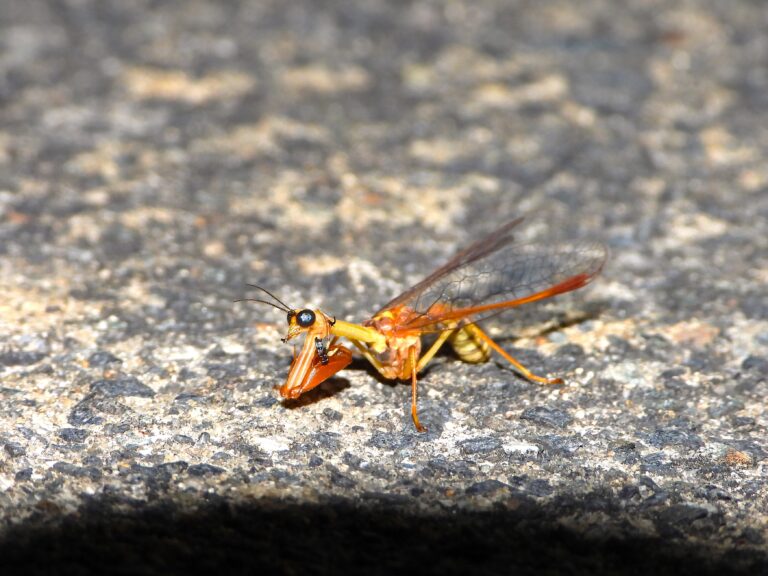Horned Green Stink Bug (Pentatoma japonica) – Wildlife of Japan
Introduction
The Horned Green Stink Bug (Pentatoma japonica) ranks among Japan’s most striking shield bugs. Its metallic-green body and sharp, horn-like shoulders make it instantly recognizable. Belonging to the family Pentatomidae, this species lives in mountain forests across Japan and other parts of East Asia.
Appearance
Adults reach 17–25 mm in length, making them one of Japan’s larger stink bugs. Their dorsal surface shines metallic green with bronze reflections, while the legs and underside show reddish-brown tones. The sharply angled shoulders form horn-like projections that set this species apart from other green shield bugs.
Habitat & Distribution
Pentatoma japonica inhabits deciduous mountain forests from Hokkaidō to Kyūshū and also occurs in Korea, China, and the Russian Far East. It feeds mainly on the sap of trees such as elm, oak, birch, maple, zelkova, and dogwood.
Behavior
This species completes one generation per year. Young nymphs overwinter under bark or in crevices of host trees. In spring, they resume feeding; adults appear by late June, and mating peaks around August. Mostly nocturnal, the bugs often visit lights in mountain areas.
Diet
Like most stink bugs, P. japonica pierces plant tissue and sucks sap. It prefers broadleaf trees including elm, oak, maple, birch, and zelkova. Rare feeding on fruits such as peaches and apples was recorded in Nagano during the 1970s, but experts regard it as a minor and occasional event.
Conservation Status
No national threat listing covers this species in Japan. Populations remain stable and common in mountain forests without signs of decline.
Author’s Impression
Up close, the metallic-green sheen of this bug is breathtaking. I once found one resting quietly on a birch trunk in the fading light of evening. Though stink bugs often suffer from a poor reputation, this one shines as a true jewel of Japan’s forests.

